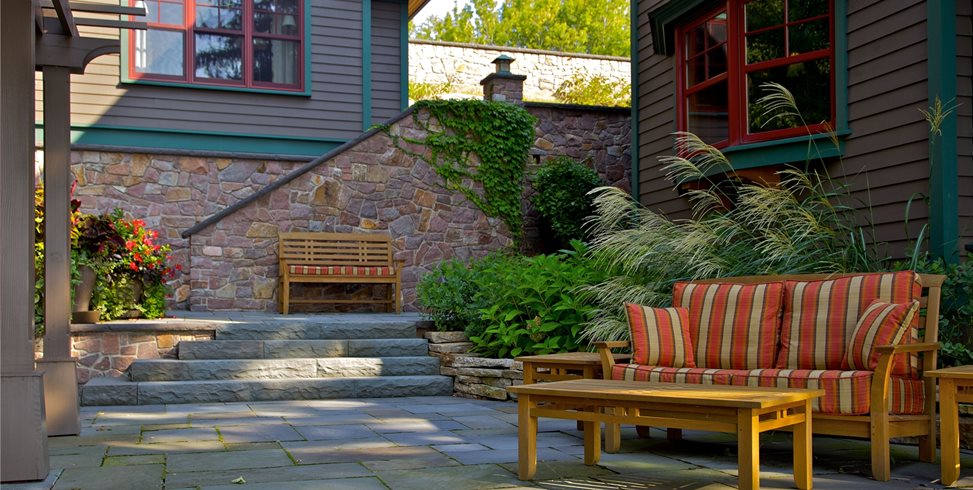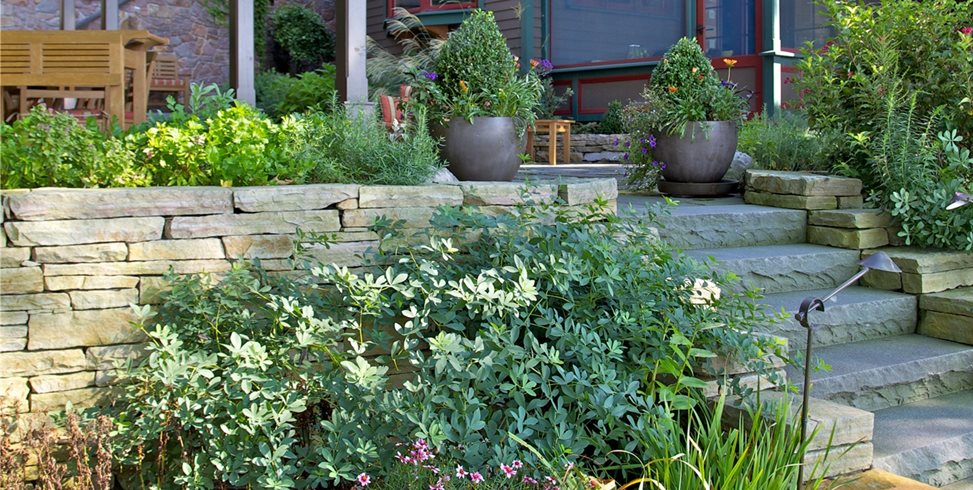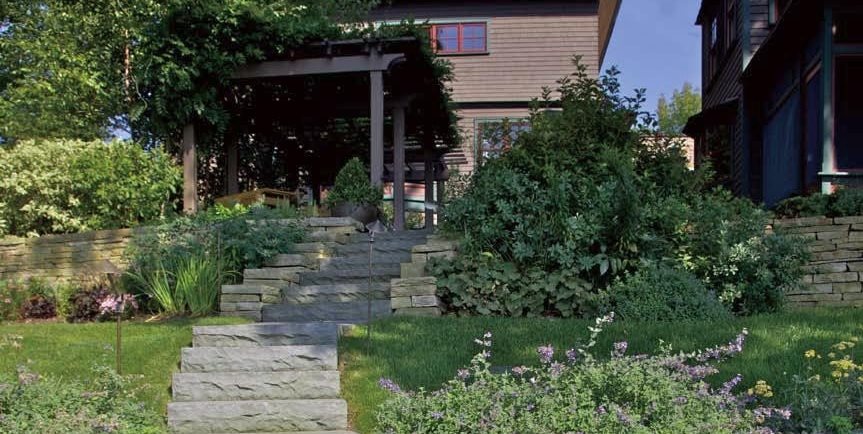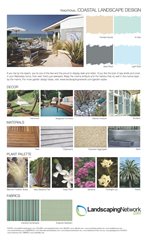Coastal Gardens
Eight dos and don'ts for designing gardens on the coastUse this design sheet to help you create the perfect coastal landscape. You'll get ideas for color, décor, materials, plants and fabric. It is a great starting point for any landscaping project.
Coastal Landscape Style Guide (PDF)
View all Landscape Design Style Guides
Plants for the coastal landscape:
Trees:
Austrian pine
Black cherry
Serviceberry
Red cedar
Birch
White oak
Plants to screen the wind:
Beach plum
Common sea buckthorn
American cranberry
Northern bayberry
Smaller Shrubs:
Bearberry
Heather
Lowbush blueberry
Virginia rose
Sweet fern
Rosemary
Lavender
Catmint
Ornamental grasses:
Panic grass
Switch grass
Miscanthus
Spike grass
Rushes
Remember that plants native to your region will perform well and fit better within the context of your surroundings.
Everything about the coast evokes motion, from the ocean waves to the shifting sand dunes; the flapping of sails and the swaying of beach grasses.
-
You May Also Like:
Tropical Landscaping - Ideas that will help you bring the tropics to your own backyard
Mediterranean Landscape Design - Ideas for creating your own Mediterranean garden
"So when designing for the coast," landscape architect Mariane Wheatley-Miller says simply, "movement is vital." Wheatley-Miller has over twenty years of international design experience, and creates gardens that extend the home and living space into the outdoors. Here are her professional tips for designing the coastal landscape.
Dos:
- Do choose building materials with care. "Things deteriorate three times as fast in the salt air," says Wheatley-Miller. Choose hardwoods such as ipe which absorb less moisture, galvanized or stainless steel to avoid rust, and UV-resistant paints and fabrics to prevent premature fading.
- Do set seating areas out of the prevailing wind. If the layout of the landscape makes it difficult to create a sheltered seating area, it's possible to create a lower area by cutting into the ground three to four feet deep and using the land itself to screen you from the wind.
- Do use pale paving in a coastal area. Pale colors of paving or stone reflect the light, while dark colors soak in the heat and can be uncomfortable to spend time on.
- Do go bold in your garden furnishings. "The horizon and the sea are such an immense backdrop, you really can't afford to do the landscape halfway," says Wheatley-Miller. Bright colors call to mind the excitement of a beach holiday, and enliven a coastal landscape.
Don'ts:
- Don't use a fixed, stiff planting style. "Plants should mirror the sense of movement in the sea," explains Wheatley-Miller. Ornamental grasses and other plants with a flowing appearance best reflect the beauty of the ocean.
- Don't create a Las Vegas-style display with your landscape lights. "It's what you're lighting that is beautiful, not the lights themselves," says Wheatley-Miller. Hide the light source behind a grass or another landscape feature so you see the effect and the shadows of the light, and always use a shield on lights to avoid light pollution and protect the beauty of the night sky.
- Don't shun your region's native plants. "You can have an absolutely stunning garden using native plant species," says Wheatley-Miller. "They're more resilient to the natural environment, easier to maintain, and they attract the birds, butterflies, bees and frogs that make a landscape rich with interest."
- Don't plant fussy lines of annual flowers within garden beds. Instead, go for a dramatic color display by strategically placing large planters near patios, window views, or seating. This makes a more theatrical impact in the landscape, and provides an easy place to have success with tropicals and lushly flowering annuals.
Color themes that work on the coast
When selecting fabric and furnishings for your coastal garden, "step into the mind of a child," says Wheatley-Miller. "You want that energy and excitement that bold colors bring." Companies like Sunbrella offer a wide range of hues in their outdoor fabric line.
Colors to consider:
- Orange, salmon and gold echo the warm tones of a sunset.
- Crisp nautical blues and whites celebrate that you're on the waterfront.
- Chartreuse and black furniture look stylish and sharp against pale paving.
- Vivid colors like red, yellow or purple bring cheer to the landscape.
- Avoid muddy-looking greens or browns, which appear dull against such beautiful natural views.
Coming from a European background, where land is more valuable and expensive to purchase, Wheatley-Miller is passionate about maximizing the space we have in our gardens. Entertaining or dining areas, seating, fire pits, or even something as simple as a few well-placed loungers can invite you into the outdoors and expand your useful living area.
She's also not an advocate of planting a big lawn. "We call it green asphalt," she says, "because it brings nothing to the table for the birds and wildlife we all enjoy, and it wastes water, uses chemicals to keep up, and then you need to spend time cutting it." Within six months of replacing her own lawn with landscaping, she shares, "the birds and butterflies were flying around, and we'd created an actual ecosystem supporting life." The interaction and life that a garden brings to a property hold a lot of joy for her. "As a lifelong gardener, I couldn't imagine being without that."
Mariane Wheatley-Miller operates AJ Miller Landscape Architecture, a firm based in Syracuse, NY that offers garden design, landscape management and planning and urban design services.

 Backyards
Backyards
 Front Yards
Front Yards








